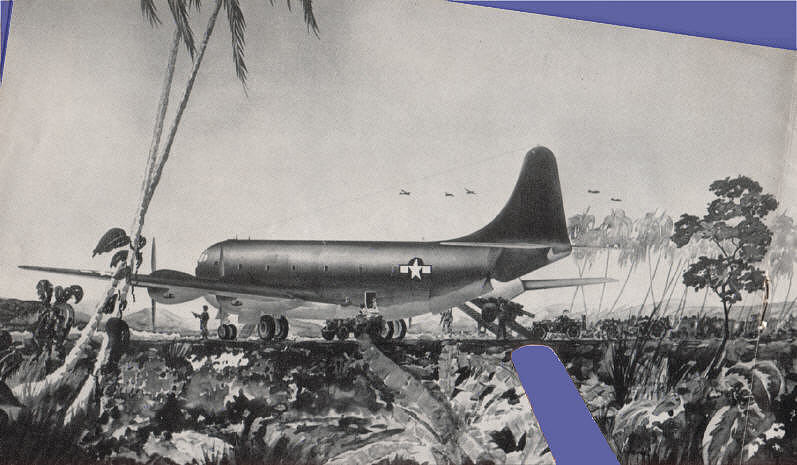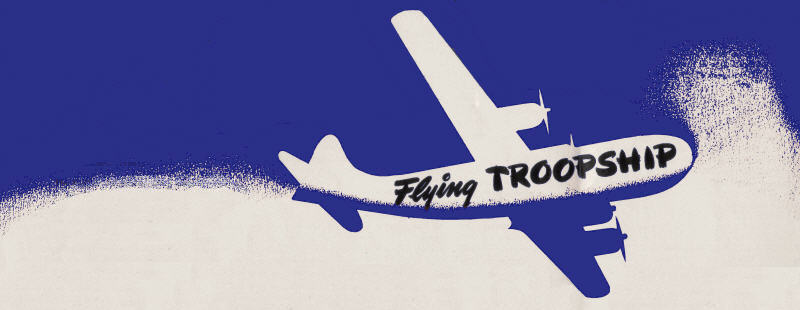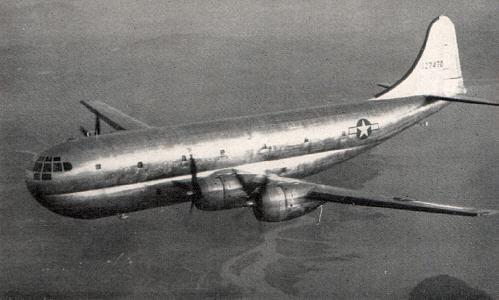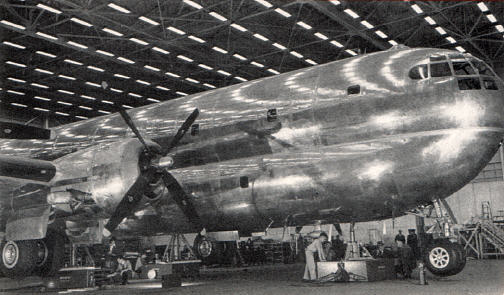


From «Boeing Magazine», January 1945





NEVER was an airplane unveiled in more dramatic a fashion than the new Boeing C-97 Army transport, which this month made its official bow by knocking almost an hour off the transcontinental transport speed record.
Just to review the record briefly: The huge 97, largest land transport in the world, made the flight from Seattle to Washington, D. C., in six hours, three minutes, fifty seconds. The former transcontinental transport record was six hours, fifty-eight minutes, set by Lockheed's Constellation last year. The fastest transcontinental trip made by any type plane was six hours, thirty-one minutes, turned in last May by Col. Clair Peterson, flying from Los Angeles to New York in a P-51 Mustang, America's speediest fighter plane.

The C-97's average speed for the 2,323-mile flight was 383 miles per hour, previously an unheard of pace for anything but the fastest of fighter planes. On the previous record flights, the Constellation flew 23 miles less than the C-97; the Mustang 123 miles farther. Projecting the 97's average speed over the routes flown by the others, the Boeing ship would have beaten the Constellation's time by fifty-eight minutes, the Mustang's by seven minutes.

The 97's amazing record should not, however, obscure the importance of the all-around war job the plane is designed to do—a job in which speed is only one of its features, and not necessarily its outstanding one.
The C-97 was born of the realization that a large factor in the winning of wars is the ability to move swiftly and to surprise the enemy. One of the most successful ways to do both is to be able to pick up substantial numbers of fully equipped troops, move them by air, and set them down shortly in a spot where the enemy is least expecting them.
The first air transport capable of doing that job—the first transport designed specifically to do it—is the C-97.
In range, payload, and speed, the Boeing C-97 is far-and-away the leader in the transport field. It can carry more than 100 fully equipped troops for long distances at exceptionally high speeds. It is designed for use as troop transport, cargo transport or hospital plane.

The C-97 is the military version of the "Stratocruiser," projected Boeing commercial transport which was introduced to the public two months ago. On it Boeing designers worked closely with the Air Technical Service Command.
The giant plane has a usable cargo space almost equal to that of two average railway boxcars. Its volume — 10,000 cubic feet—is more than twice that of the B-29. To give it that much space, and make it all usable, Boeing built the 97 with a double-deck design. The plane is in effect, one fuselage section on top of another, greatly increasing capacity.
The C-97 loads its capacious interior via a drive-up ramp which is let down from within the ship through a pair of loading doors. An electric hoist operates on a ceiling rail along the entire length of the fuselage, lifting cargo inside.

Two fully loaded ton-and-a-half trucks can be driven up the ramp and into the airplane, with room for additional equipment, cargo or troops. The ship can carry two light tanks or many other types of freight in various arrangements.
With a length of 110 feet, the C-97 has a gross weight of 120,000 pounds.